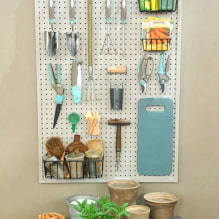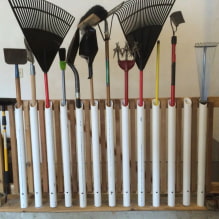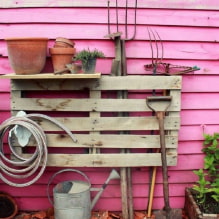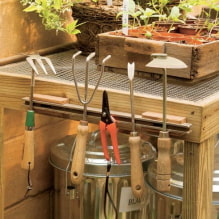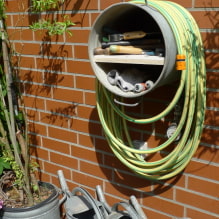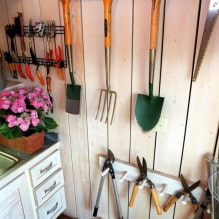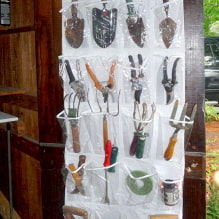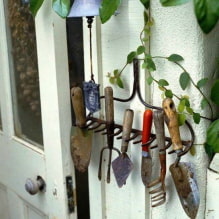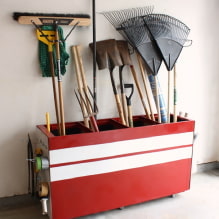Stand
You can buy such a structure in a store or make it yourself. It is convenient to keep a plastic stand in the corner of a shed or garage, and if necessary, move it to any place.
A homemade device is usually made of wood treated with impregnation – this is an inexpensive and durable material that is easy to work with.
The stand can be made from ready-made pallets – the main thing is that the structure is stable. Thanks to the many cells, garden tools do not fall, they are easy to store and take out.
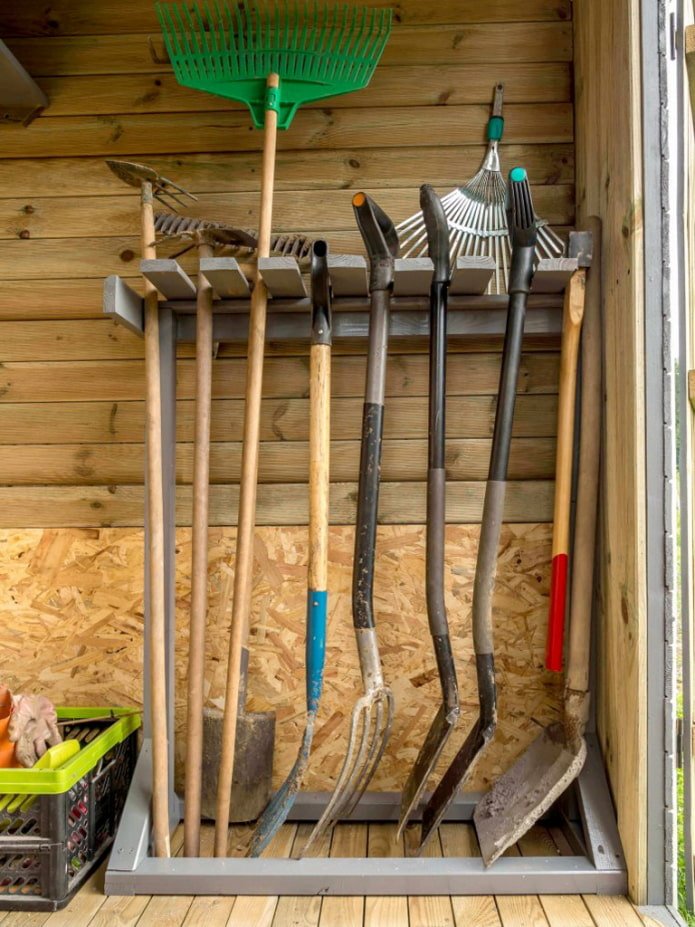
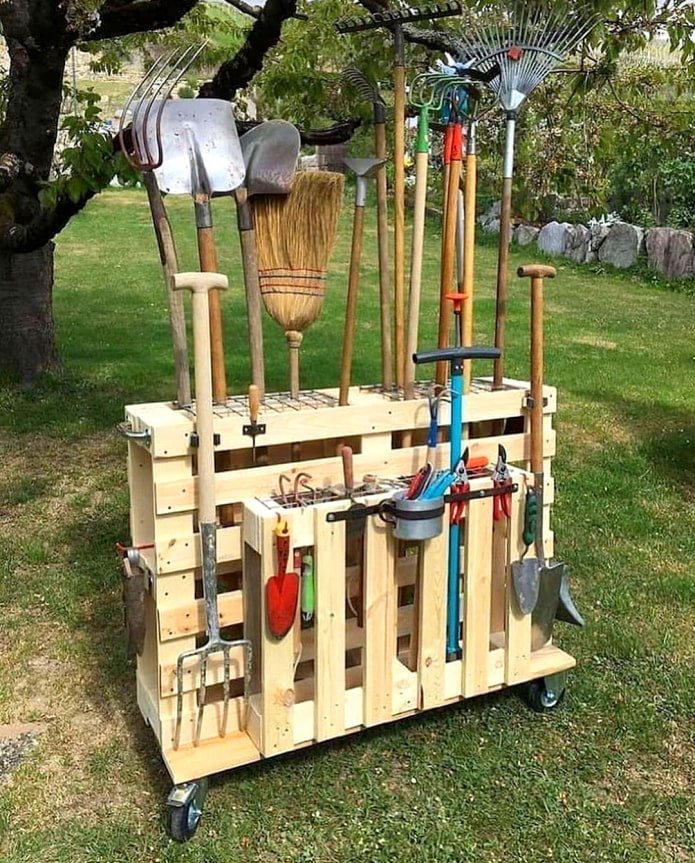
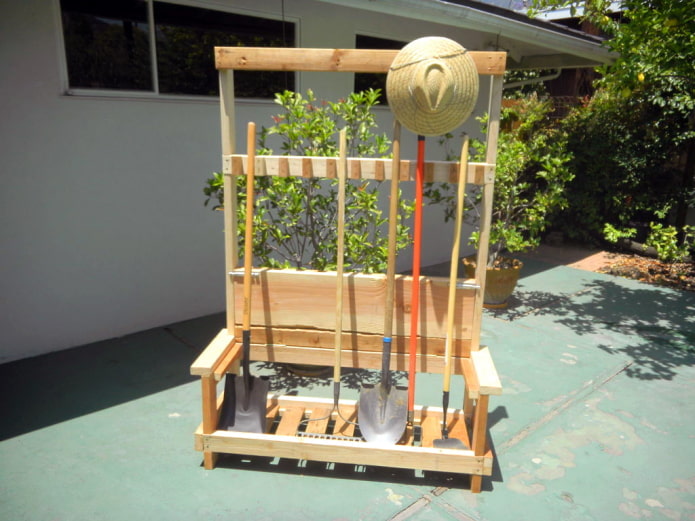
The photo shows a rack for shovels and rakes, combined with a folding bench.
Garden cabinet or utility block
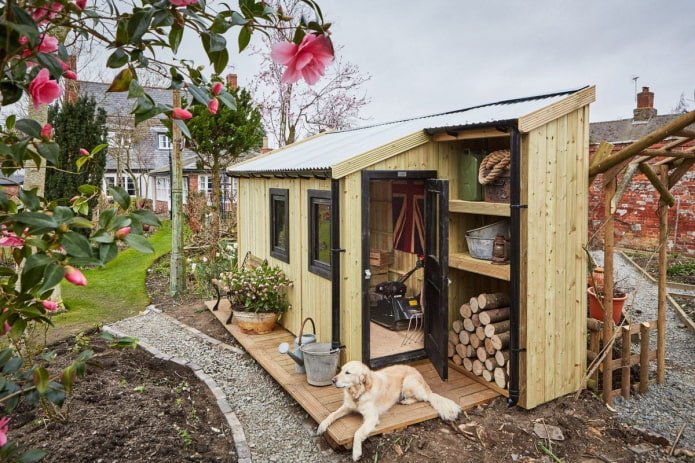
The main advantage of garden cabinets is the presence of doors that hide the unsightly picture. The structure can stand separately in the depths of the summer cottage, or be attached to the wall of a house or shed.
Utility blocks are sold ready-made, but with due diligence, such a structure can be built from scrap materials and filled to suit your own needs. You should nail several hooks (for a hose and small items), hang shelves, rails, or install a vertical stand.
Another option is to use an old wardrobe, protected with stain or paint. It is important that the structure fits into the landscape design.
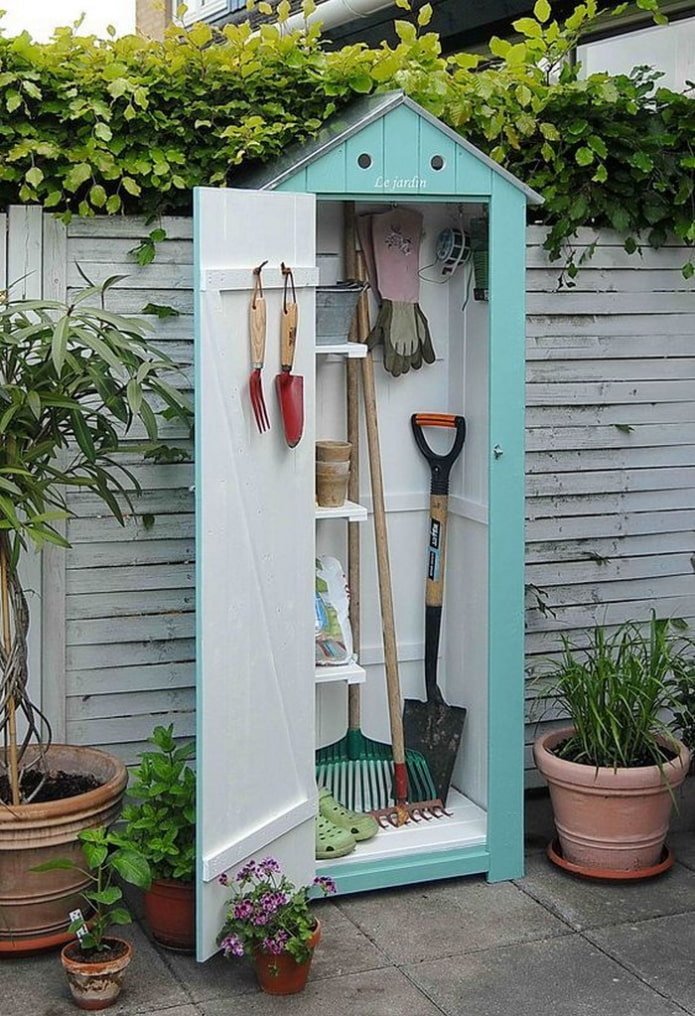
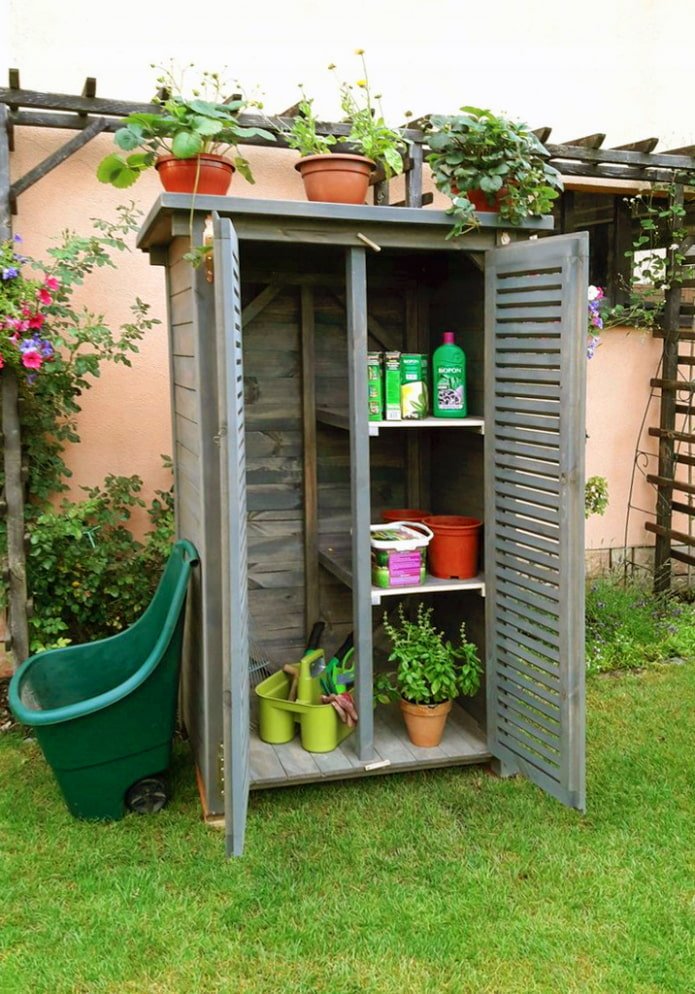
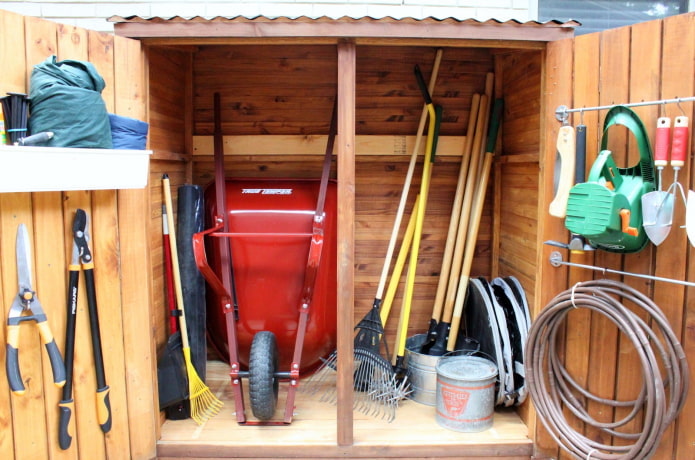
The photo shows a roomy wooden utility block that uses not only the interior space, but also the doors.
Mobile Box
A wooden cube-shaped structure is an interesting and aesthetic way to store garden tools. The base of the box is three perforated shelves. The holes provide stability to the equipment with long handles. There are hooks on the sides for various small items, and furniture wheels are fixed at the bottom, which help to move the box to any place.
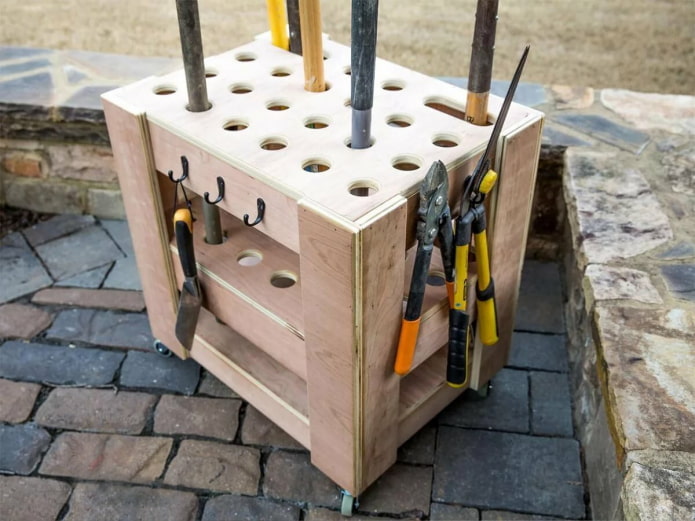
Holders made of pipes
The remains of plastic pipes of a suitable diameter are a great way to place shovels and rakes in a vertical position. To do this, attach a wooden strip to the wall of a shed or garage, and if there are a lot of tools, knock together a frame from several planks.
The PVC pipe must be cut into cylinders of the same size and carefully secured with a screwdriver.
Such holders are popular with gardeners, but there is an opinion that it is inconvenient to immerse tools in pipes – for this, shovels have to be raised high to the ceiling. The problem can be easily solved by cutting the pipe on the side.
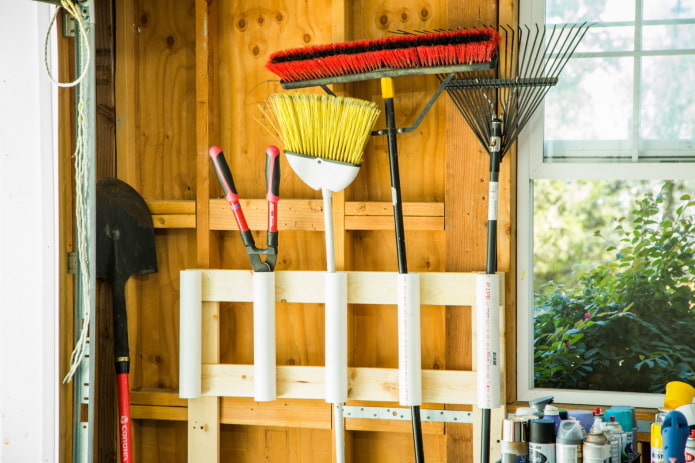
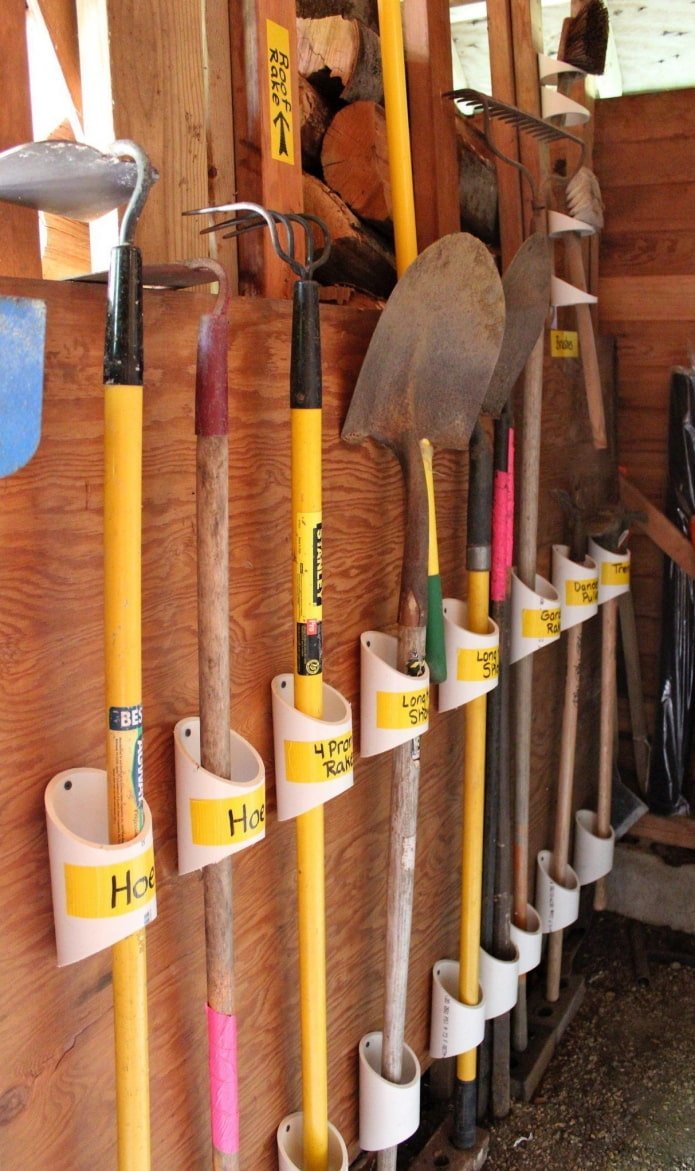
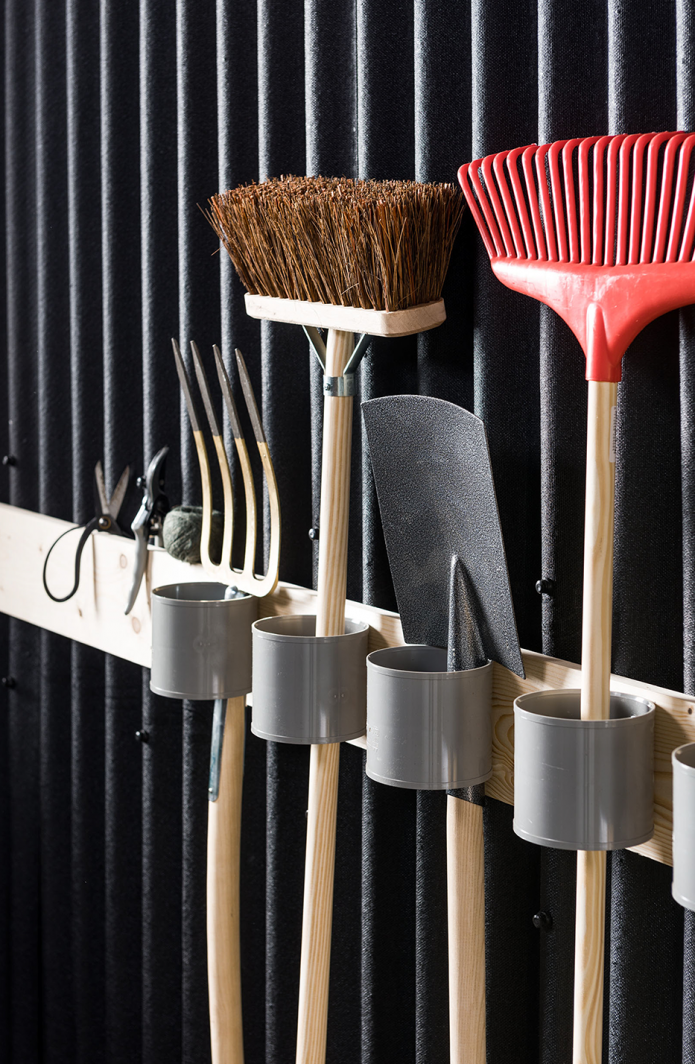
Bar holders
Another simple organizer for garden tools, the idea of which was spied on the windows of construction and hardware stores. Of course, you can find ready-made metal holders, but a homemade design has significant advantages: it does not require expenses and is created individually in accordance with the number and size of the inventory.
Before sawing the bars and nailing them to the base, you need to accurately calculate the distance that the pitchfork and rake take up when suspended.
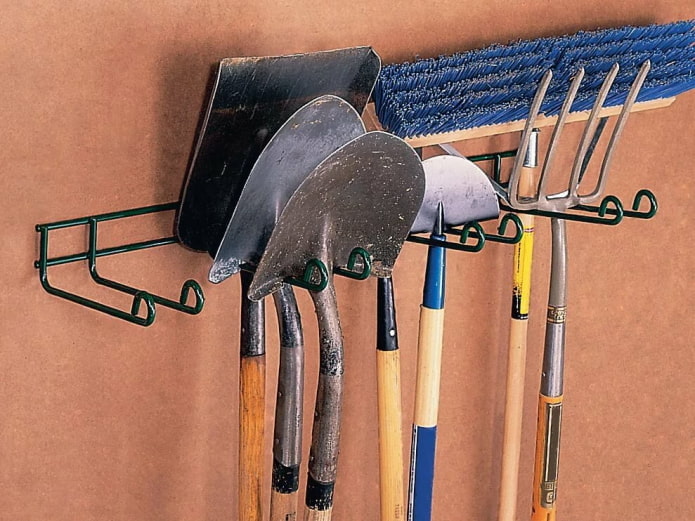
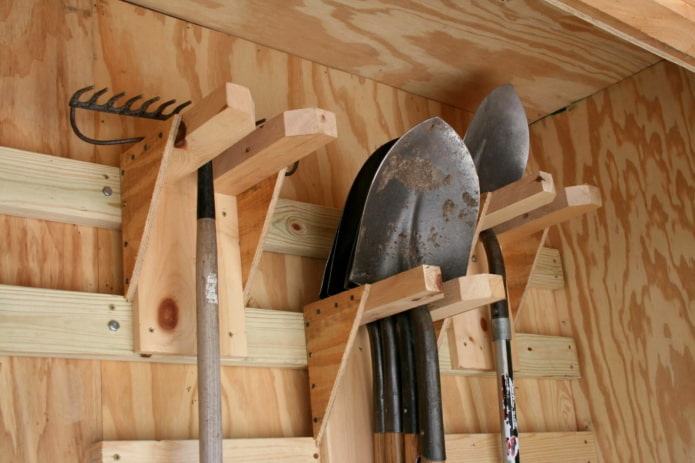
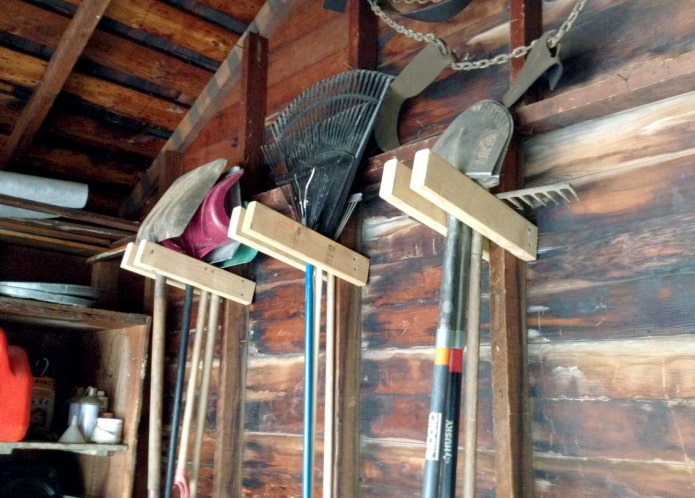
The photo shows a simple design made of six short bars – they are nailed directly to the wooden frame of the shed.
Barrel
If you have a sturdy but leaky tank lying around in the garden, you can turn it into a nice organizer for garden tools. In a plastic barrel, you just need to make holes in the lid and weigh down the base, and a regular tank should be equipped with a grate. The barrel organizer resembles a huge pencil case and looks very original.
For those with flat paths and low tools, a ready-made barrel on wheels, equipped with a convenient handle, bucket and pockets for small items, is suitable. The product performs two functions at once: it can be easily moved around the site and stores equipment.
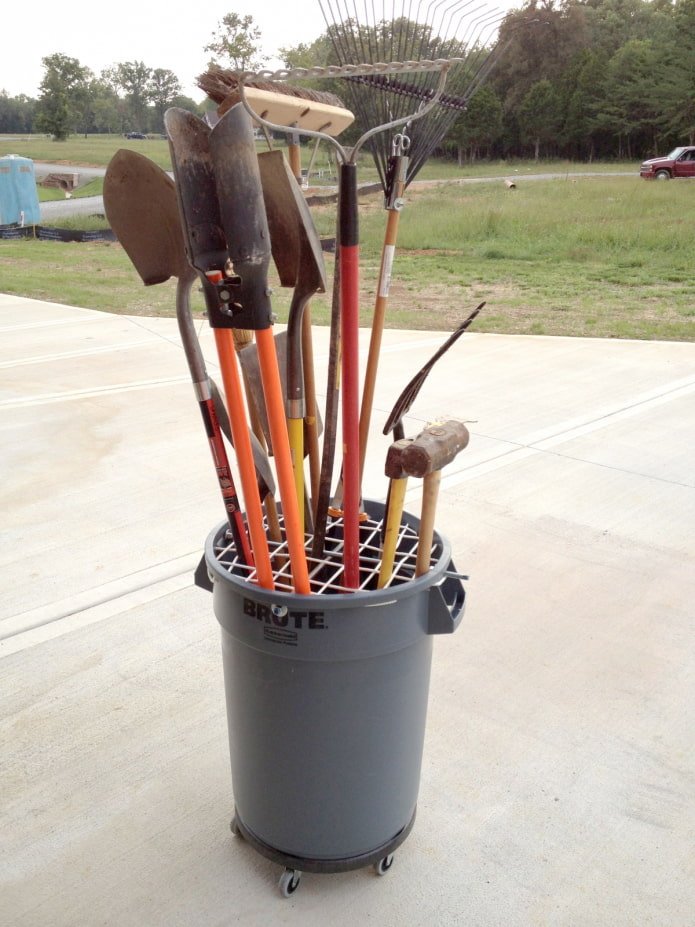
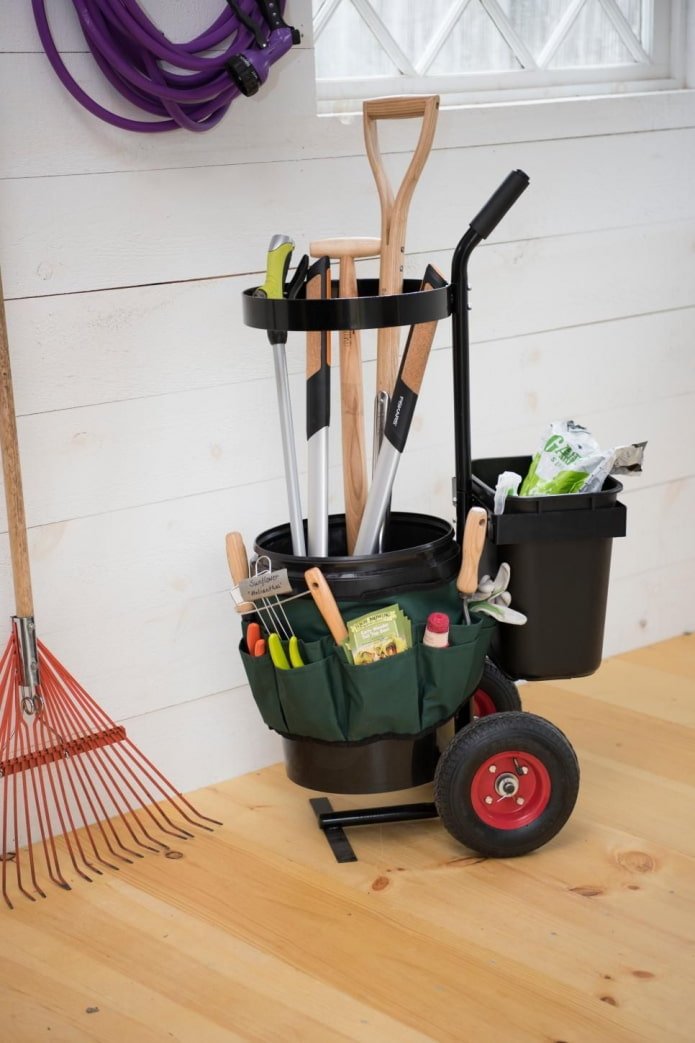
Bass with sand
Many people are familiar with the idea of placing small garden tools in a tin basin with sand.
The instructions are simple: fill the container with dry sand, add machine oil and place the tools. Sand combined with oil prevents them from becoming dull and also helps remove dirt and rust.
The problem is that machine oil leaves an unpleasant smell on your hands, and after using a pruner or shovel, chemical particles settle on the stems and get into the ground. The solution to the problem is to use natural linseed oil, brought to a boil. It is poured into sand, thereby ensuring environmental friendliness and safety of storage.
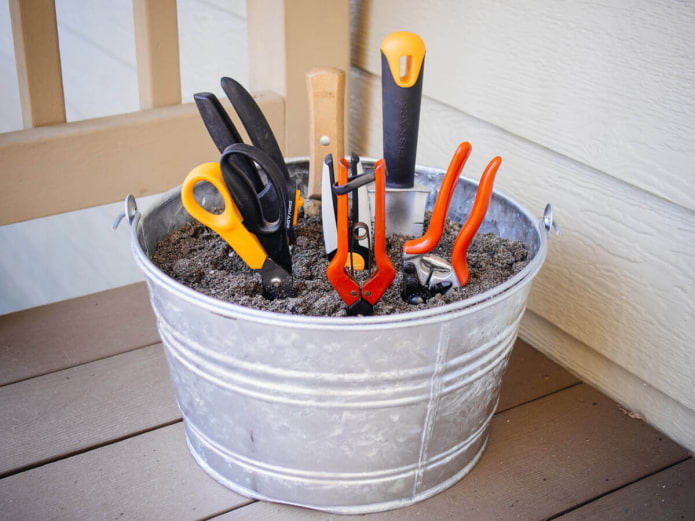
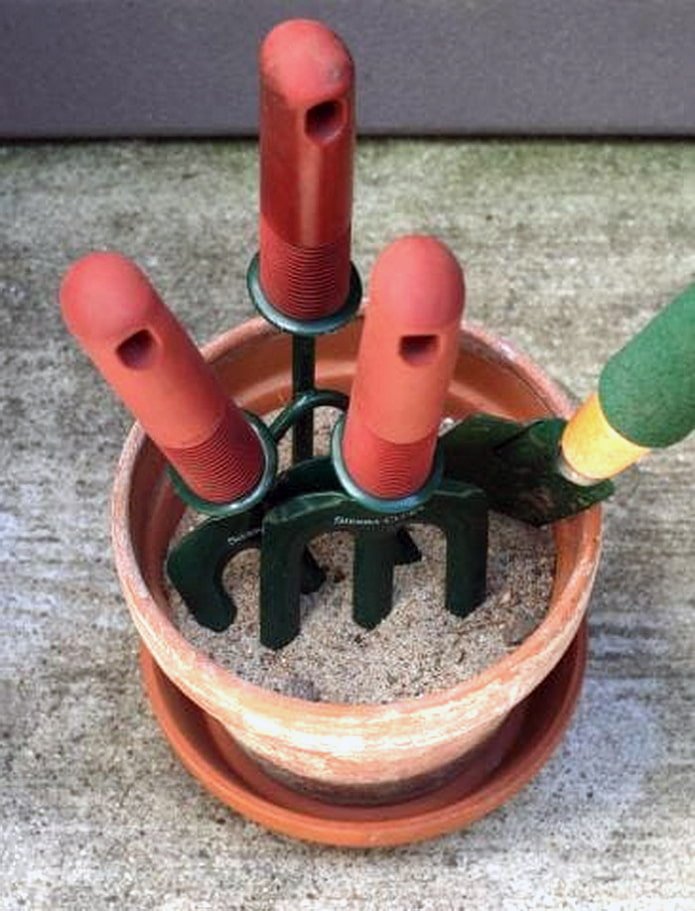
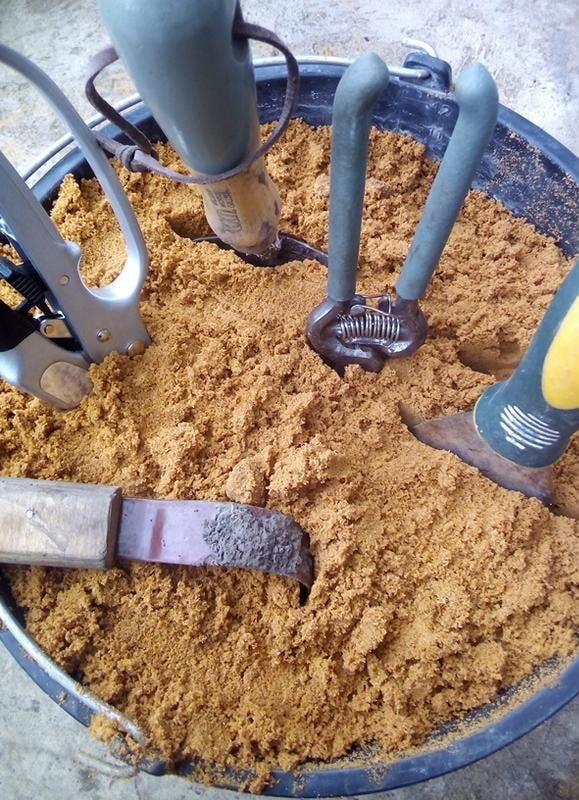
Stand
This organizer resembles a fire shield – a convenient, time-tested design. On such a stand, all the equipment is in sight and maintaining order does not cause difficulties.
The device can be made without much expense, simply by hammering long nails into the slats at equal distances from each other.
Another option is to make holders from two boards, cutting out the side holes with a feather drill. The product must be sanded, covered with a protective compound and fixed to the surface at the same level.
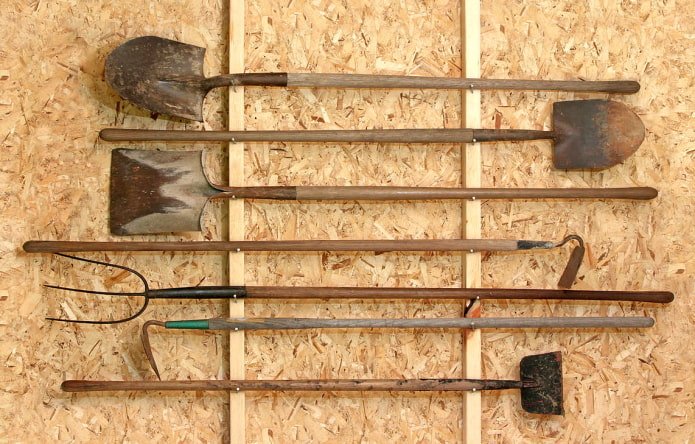
The photo shows a tool stand made of two long slats and nails.
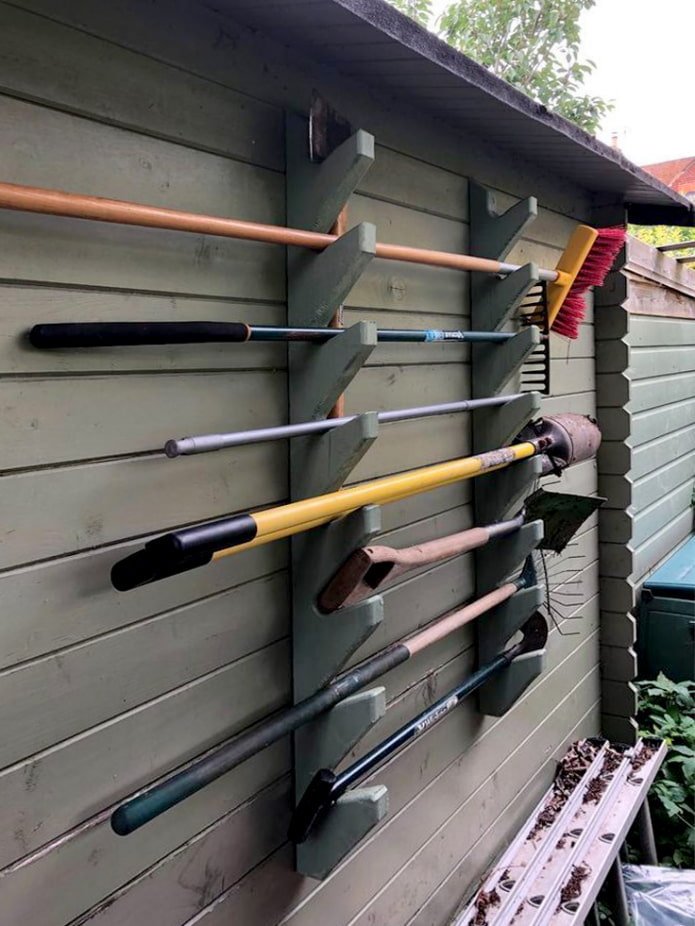
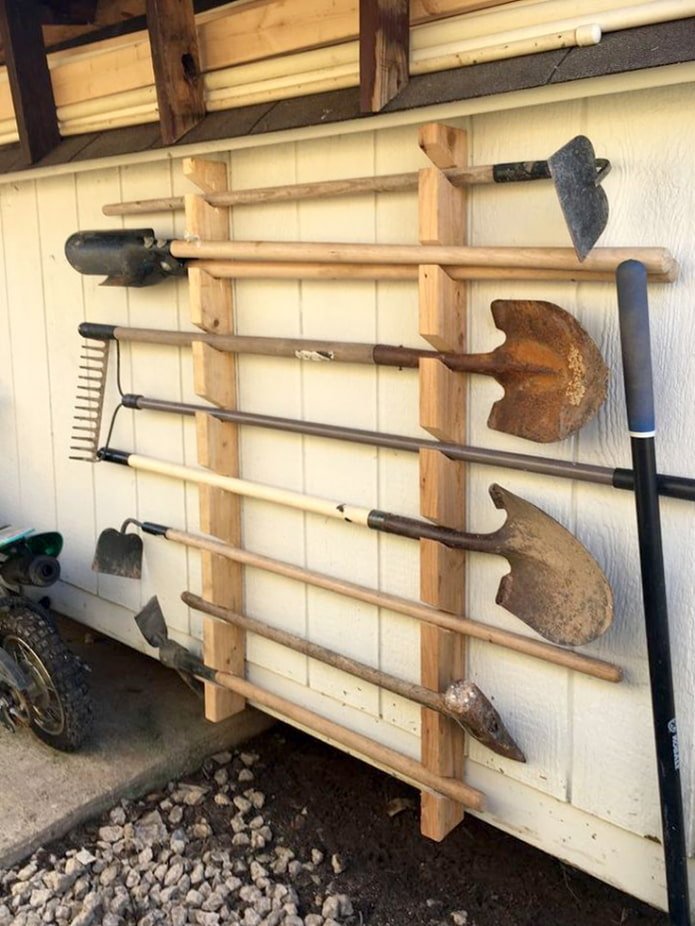
Perforated rack
Storing garden tools in a shed will reach a new level if you use a perforated board fixed to the wall. No more shelves and containers – tools do not get lost, but hang in their places.
It is convenient that even small items are in sight, and the surface for work remains free.
The essence of a perforated board is simple: numerous holes allow you to place fasteners at different heights and change them at your own discretion. Suitable for both spacious and small spaces.
You can see how the rack looks in the interior here.

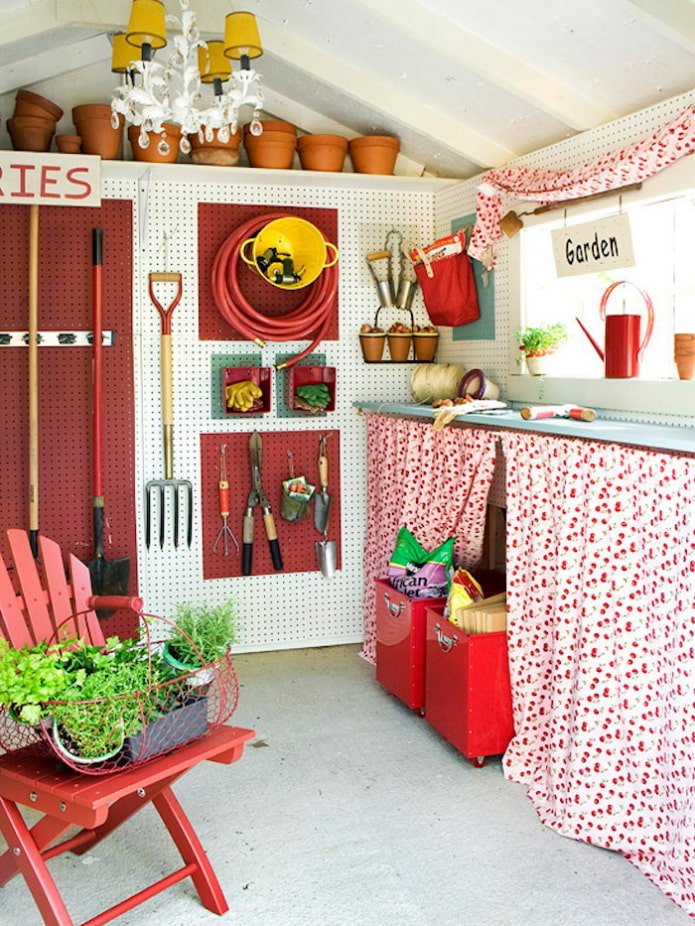

The photo shows a wall in the garage, completely lined with perforated plates.
DIY organizers
Storing garden tools can be turned into a creative process. For small items – pruning shears, gloves, a knife, a hoe – an organizer made of tin cans, made by hand, is perfect.
To create it, you will need several containers with safe edges, a rail, a carrying handle and screws for fixing. We recommend painting the finished product.
Another mobile organizer can be easily made from a metal bucket and old jeans. Larger tools are usually stored inside, and lighter things are stored in the outer pockets. The device is easy to carry and place next to the beds while working in the garden.
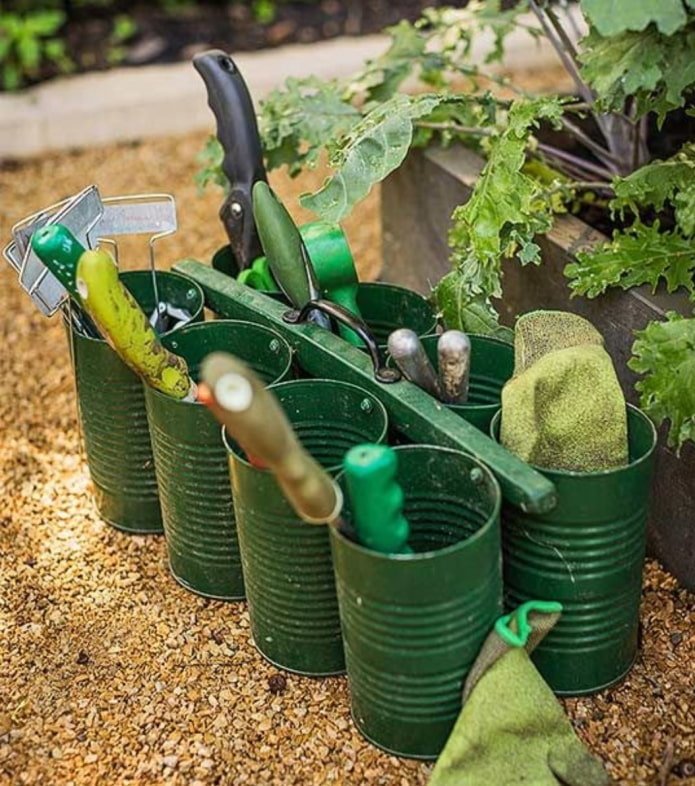
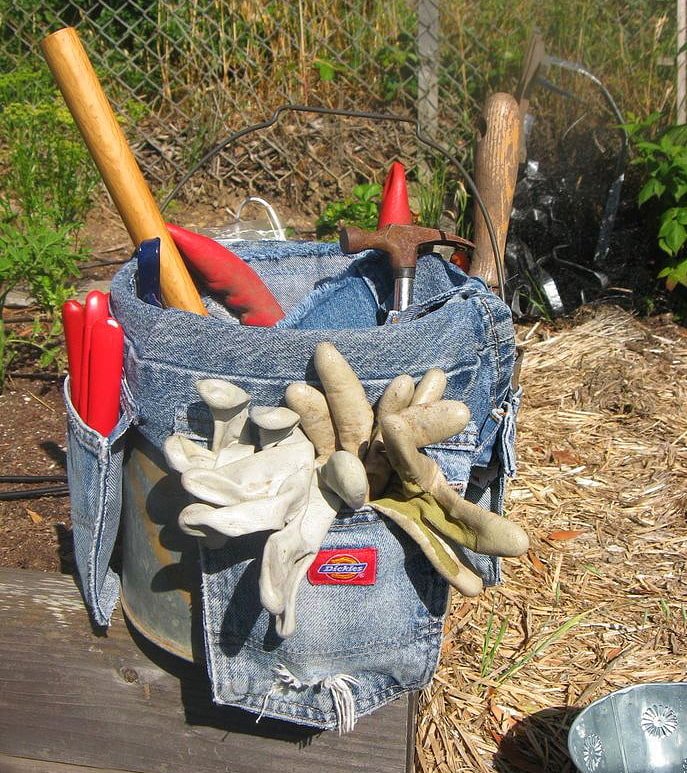
Unusual storage ideas
To organize a storage place for inventory at the dacha, it is not necessary to waste the family budget. Many devices are easy to make with your own hands, using imagination and improvised materials.
